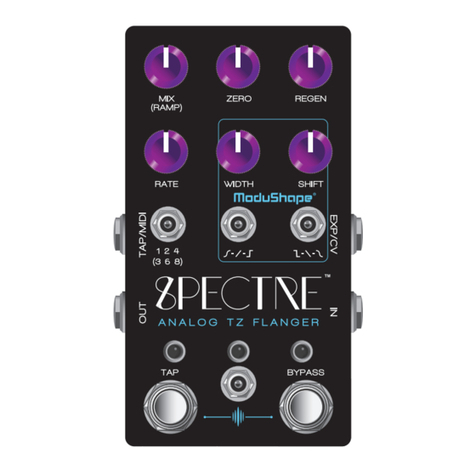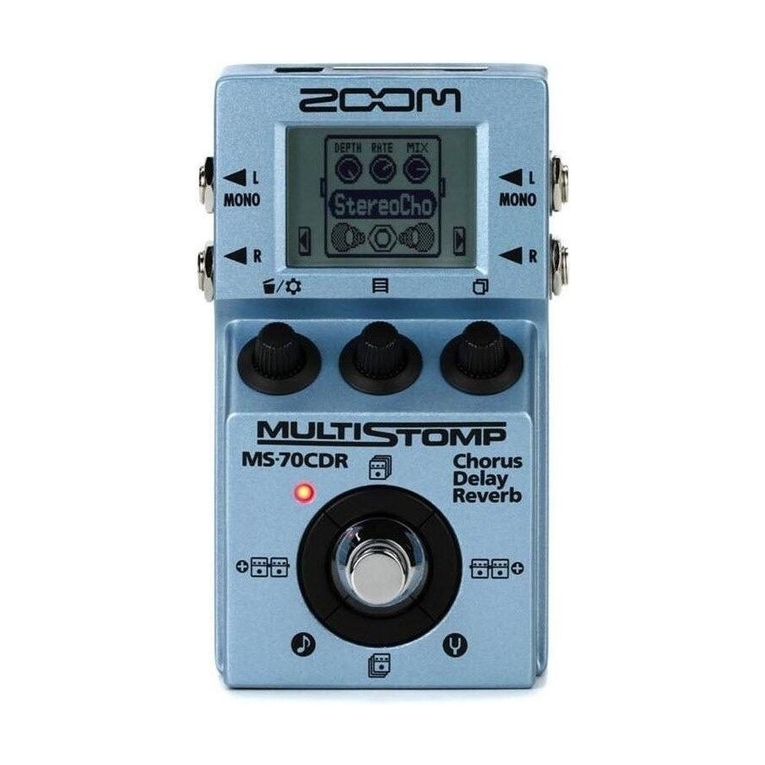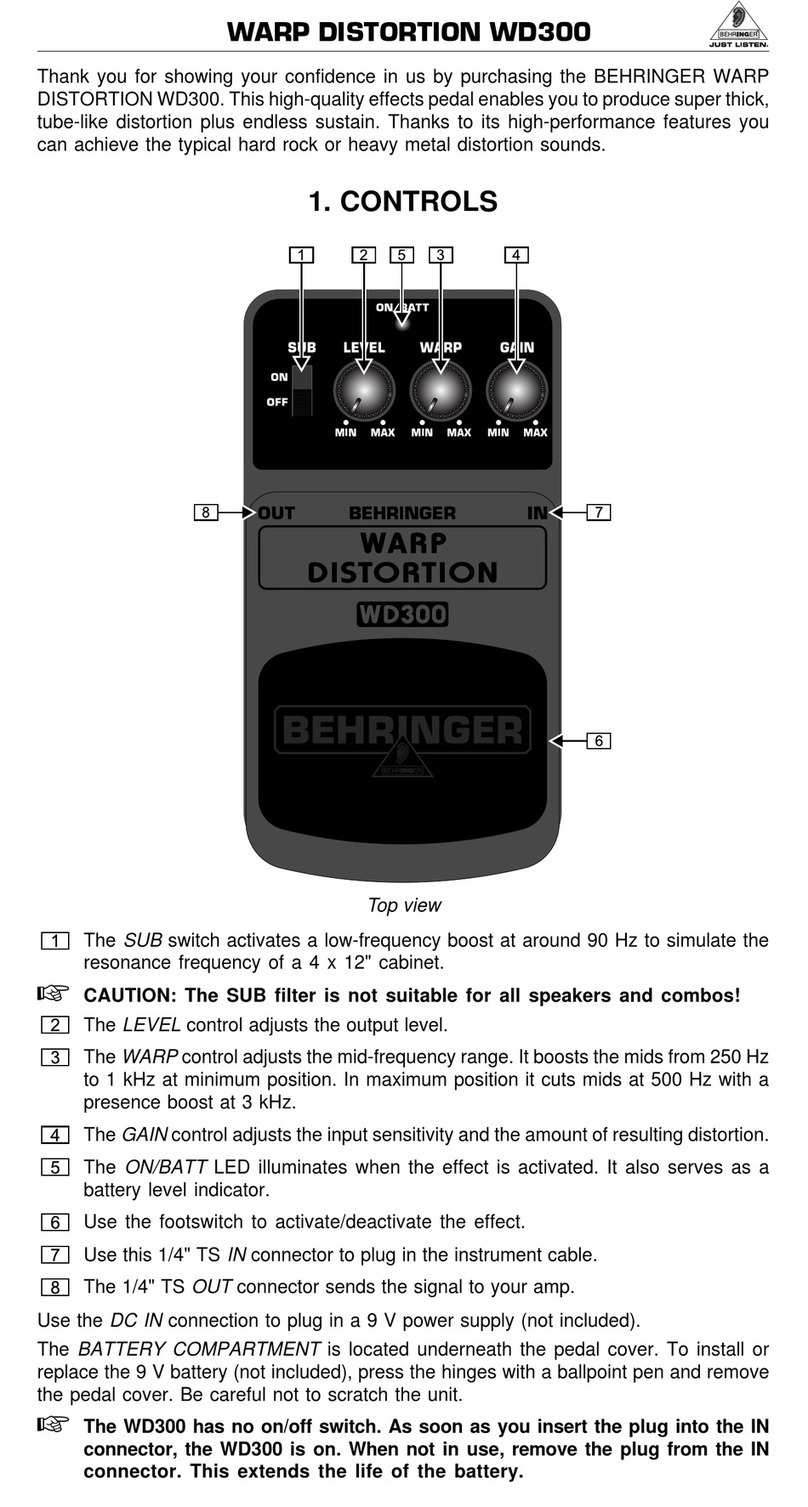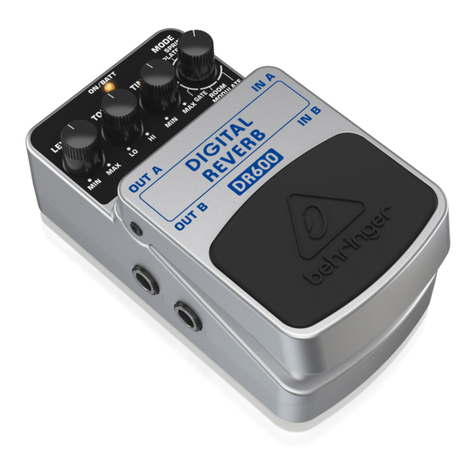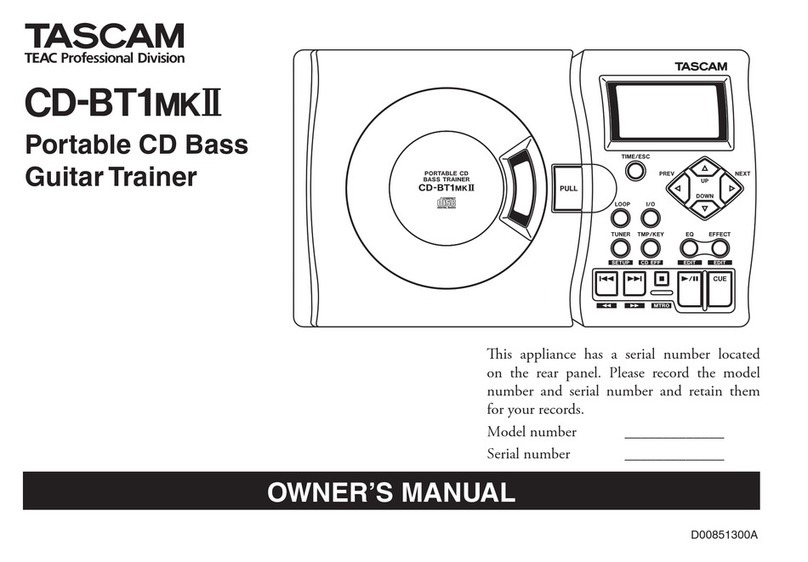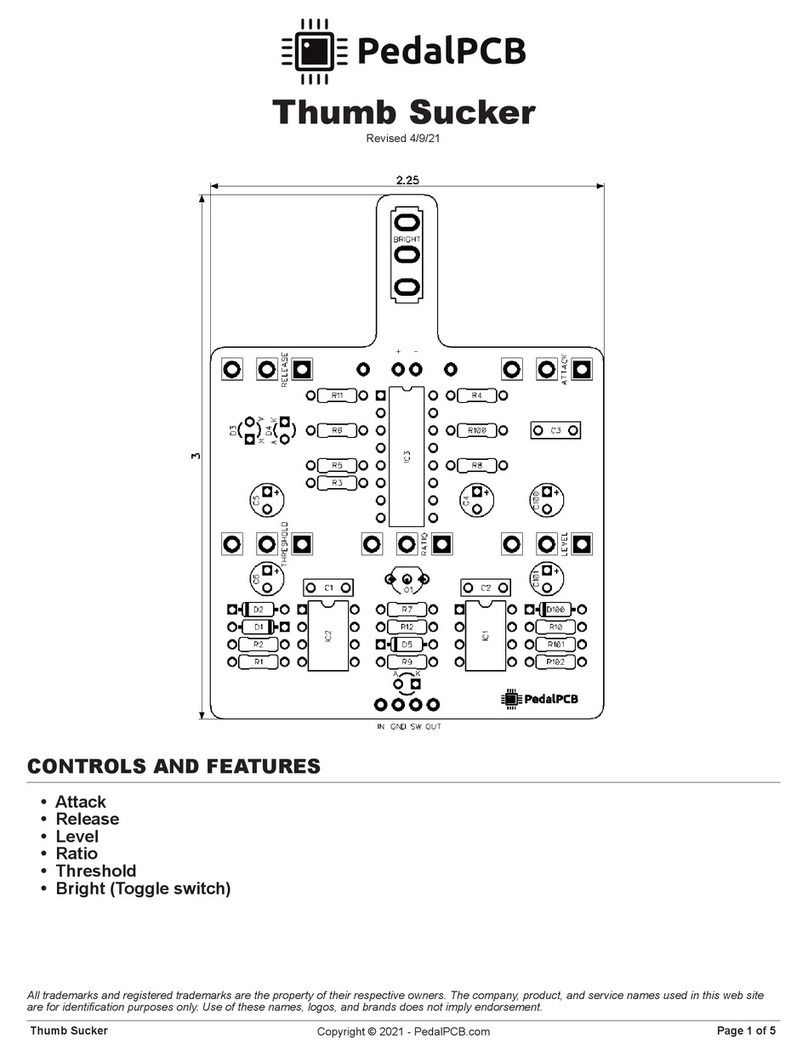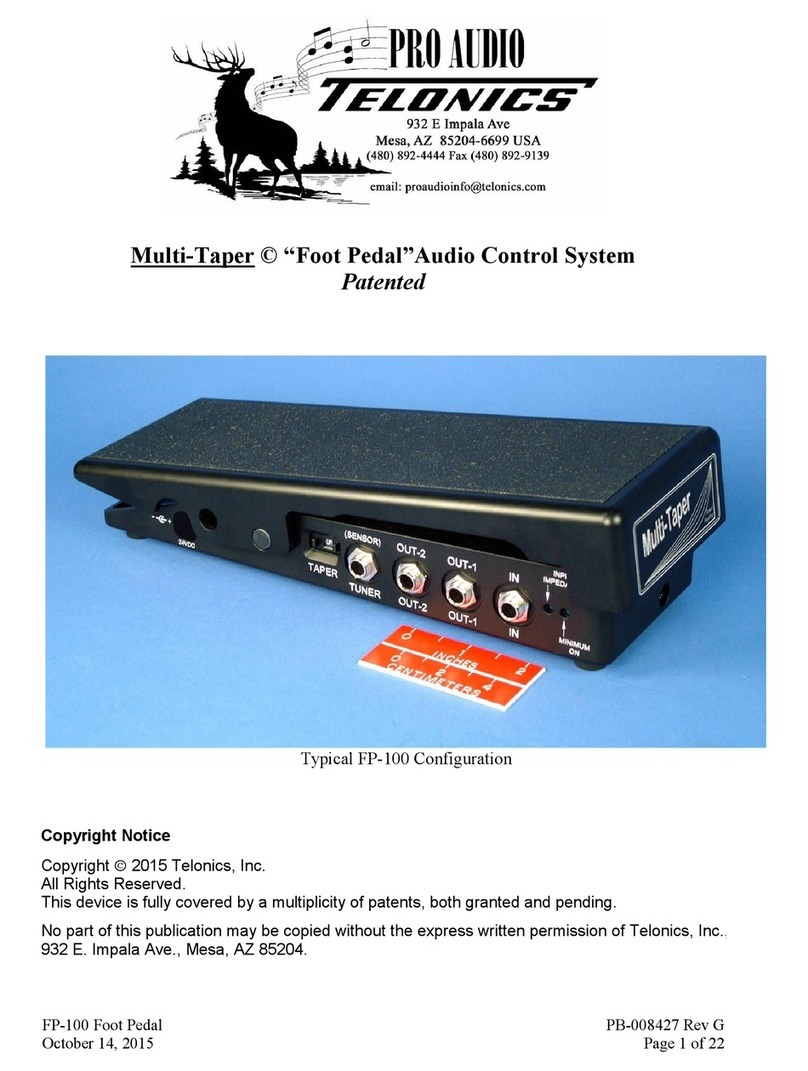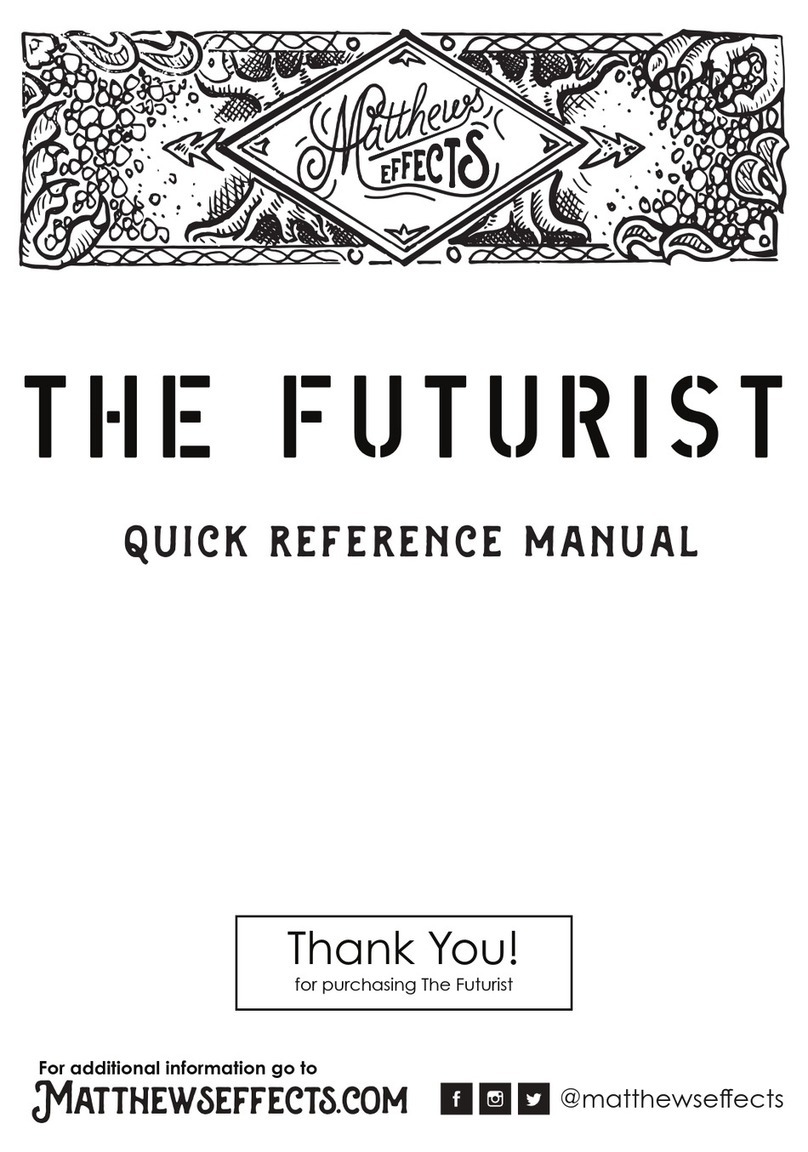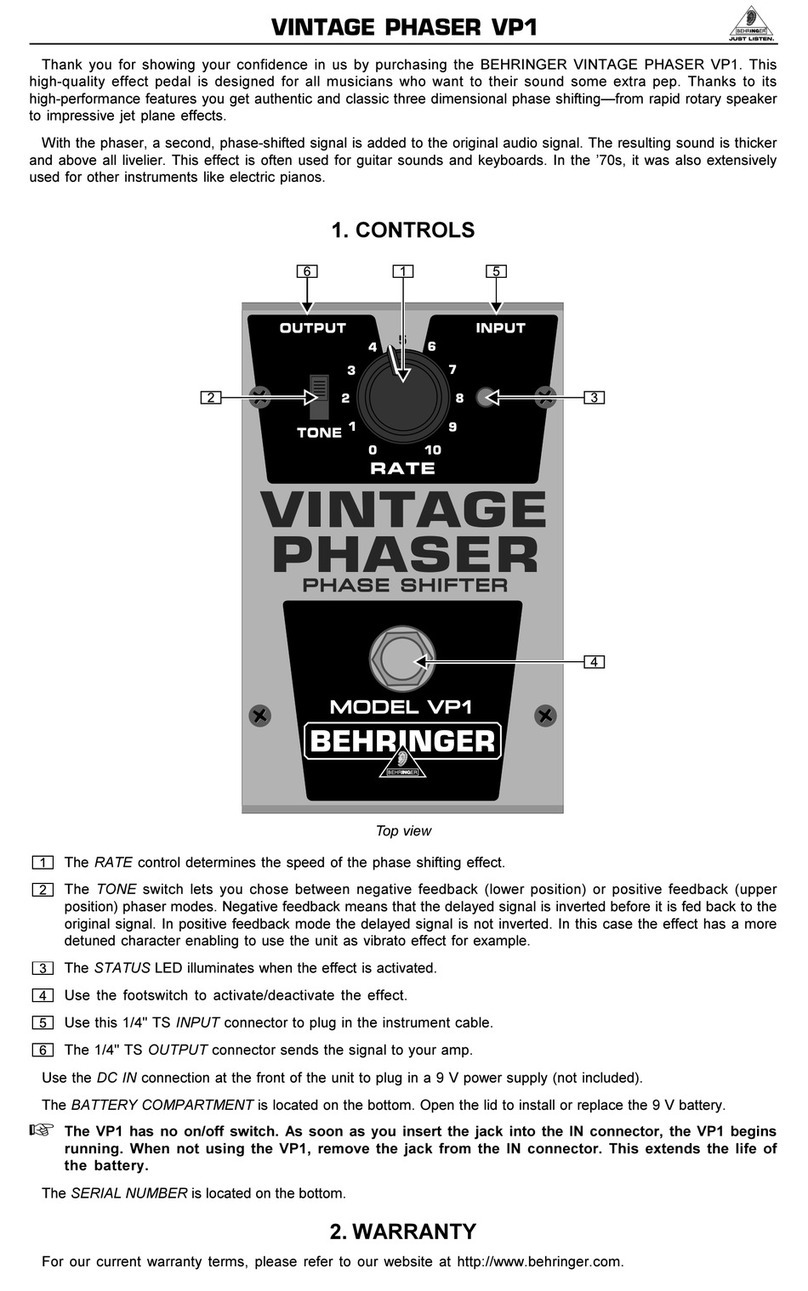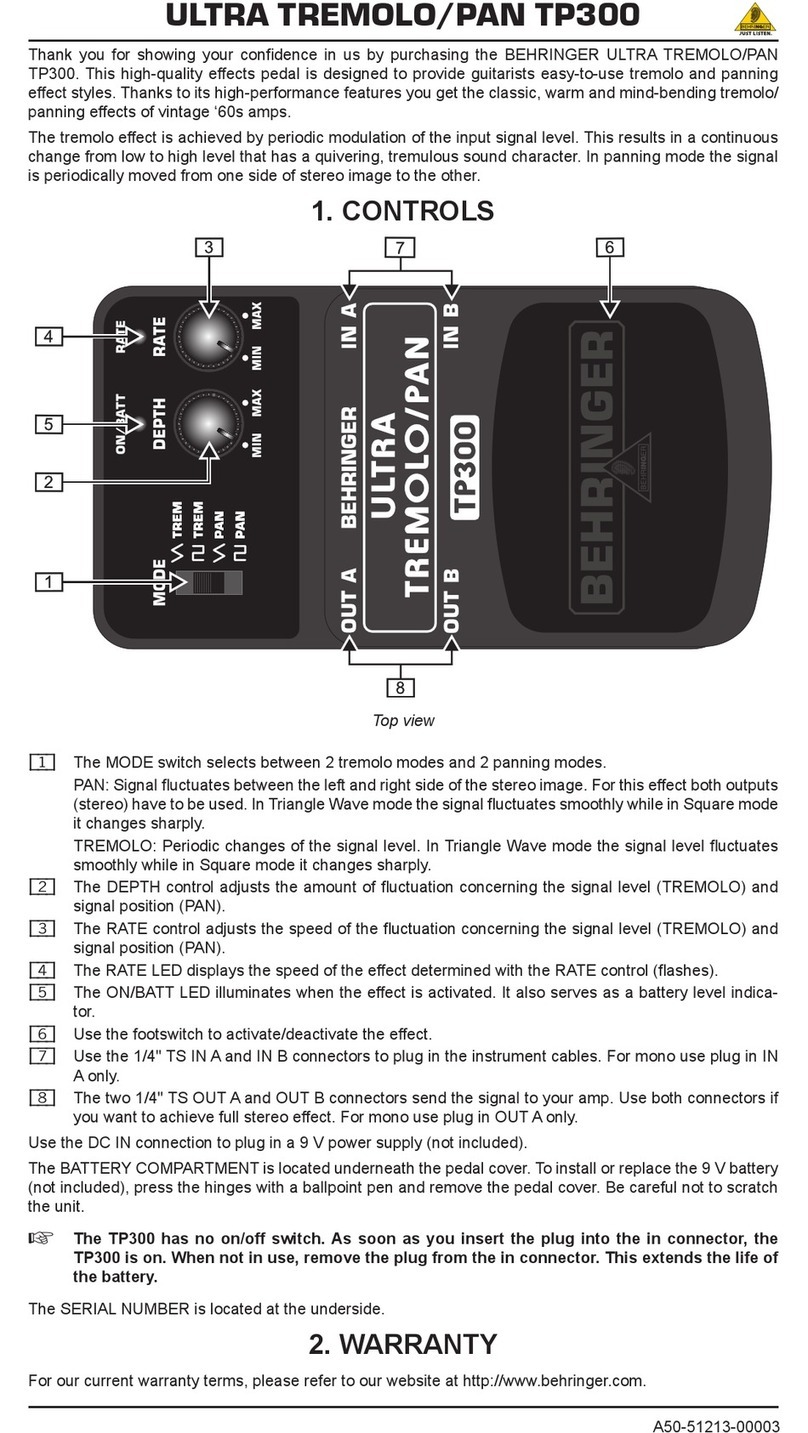ChaseBliss DARK WORLD User manual

DARK WORLD
INSTRUCTIONS
OVERVIEW
Digital World. Dark Heart. Dark World™ is the rst fully digital
offering from Chase Bliss Audio; a unique dual channel reverb that we
made with a little help from our friends. Cooper FX is responsible for
the “Dark” channel; a collaborative effort inuenced partly by their
Generation Loss and Outward designs. Keeley Electronics crafted the
“World” channel, which houses three absolutely gorgeous Hall, Plate,
and Spring algorithms. Put together, the channels can be routed in
33 distinct ways, creating a stunning palette of reverb ranging from
subtle, tasteful, and lush all the way to broken video cassette, glitch
shimmer, and innite freeze. Add all this to the dense digital control
and full MIDI, dip-switch, and preset implementation Chase Bliss is
known for, and you have yourself a very fun, powerful, and player-
friendly reverb pedal in a small package.
can set this knob to control any of the ve parameters
individually or simultaneously (Mix, Dwell, Modify, Tone,
Pre-Delay), and have it either modulate (Bounce) or ramp-
and-hold (rise or fall) via dip switches in the back of the
pedal. In this case, this knob controls the ramp time in
which this takes place.
MODIFY
This knob changes its function depending on which Dark
channel program is active. In Mod mode, Modify controls
the warble / hiss / broken-down-nature of a failing video
cassette tape, turning clockwise increases all of these
neat things. In Shim mode, Modify controls an octave
that is mixed in to the reverb. Turn clockwise to introduce
+1 octave and turn counterclockwise to introduce a -1
octave; noon has no pitch shifting mixed in. In Black
mode, Modify controls the volume of the frozen audio.
HALL | PLATE | SPRING TOGGLE
This toggle selects the reverb program that you’d like for
the World channel. These algorithms are inspired by their
beautiful, real-life reverb namesakes.
DWELL
Sets the intensity of the World channel’s reverb,
and the amount of time it takes to decay.
PRE-DELAY
This controls the amount of space between the initial
note attack, and when you start hearing world channel
reverb reections. Counterclockwise is 0ms and clockwise
has a time of 200ms.
MOD | SHIM | BLACK TOGGLE
This toggle selects the reverb program that you’d like
for the Dark channel. Mod is a reverb inspired by Cooper
FX’s Generation Loss, and is a warbly, wispy, degraded
VHS emulator. Shim is a unique dual path reverb design
with innite-style Decay inuenced by some elements of
the Outward pedal. In this mode, one reverb path freezes
a slice of your incoming audio while the other reverb path
loops back its previously frozen slice. The reverb paths
switch roles (from freezing, to loop playback) back and
forth at a LFO rate dictated by the Decay knob; CCW is
crazy fast and CW increases LFO time. In Black mode,
audio is sampled and frozen based on your playing
dynamics. When you play your instrument loudly, the
previously frozen audio in the reverb loop will be erased
and the newer sounds will be sustained innitely. The
threshold of this envelope-based effect is controlled by
the Decay knob. The higher the Decay knob, the harder
it will be to clear the frozen sound, and at fully CW
the frozen sound will never be overwritten by any
incoming audio.
DECAY (RAMP)
When you don’t have any dip switches assigned for
ramping, this control is known as the Decay knob for the
Dark channel. This knob changes its function depending
on what program is active. In Mod mode, Decay controls
the reverb amount / time of decay. In Shim mode, the
Decay knob controls the LFO time switching between the
two reverb paths described above in the toggle section.
Clockwise increases the LFO time. In Black mode, this
knob controls the sensitivity for incoming audio to be
frozen – at the max clockwise position no new audio is
allowed in. If a dip switch is engaged for ramping, you
This device complies with part 15 of the FCC rules.
Operation is subject to the following two conditions:
(1) This device may not cause harmful interference, and
(2) this device must accept any interference received,
including interference that may cause undesired operation.

MIX
Sets the wet/dry mix on the device. Counterclockwise is
full analog dry-through while turning the knob clockwise
introduces an increasing amount of wet signal. Dry path
is 100% analog. Dry is unity until the last bit of the sweep
where it drops off entirely. The gain for both wet and dry
paths can be set to taste via internal trimmers.
TONE
This single knob is a global control for the completely
separate tone algorithms on each channel. The Dark
channel features a slightly resonant low pass lter on all
three programs. The World channel employs a gentler,
more traditional low pass lter with the Spring program
having a slighter darker top end than Hall and Plate.
PARA | D > W | W > D TOGGLE
This toggle is used only when both channels are active.
“PARA” sets the channels in parallel, while the other two
position set the channels in series. “D > W” means the
Dark channel is cascaded in series into the World channel.
“W > D” means the World channel is cascaded in series
into the Dark channel.
D & W BYPASS STOMPS
Activates or bypasses each channel. These can be
changed to a momentary bypass or momentary active
via a dip switch in the back of the pedal if it is desired.
This pedal allows for “True Bypass” via a relay, Buffered
Bypass, or Buffered Bypass with Trails selectable via a dip
switch in the back of the pedal.
LOWER TOGGLE
This switch recalls presets. The right position recalls
preset #1, the left position recalls preset #2. The middle
position will always reect wherever the knob positions,
toggle positions, and dip switch positions are currently at.
In order to save to the right preset slot, you hold down
the right stomp (bypass) for 3 seconds, and then hold
down both stomp switches simultaneously for another 3
seconds. The LED blinks and your setting is saved. For
the left slot, you do the same thing, but hold the left
stomp rst. If you recall a preset, and move a knob, you
will notice that the LED above the toggle goes dim. This
is to signify that something has changed on the preset. If
you want to save this change in the preset, you will have
to save it again.
IN / OUT
¼” mono input jack.
EXP / CV
¼” TRS jack for expression pedal (parameter selectable
via dip switch in the back of the pedal). Tip goes to wiper.
Can also be used for 0-5V Control Voltage (CV) on tip
– the ring should be left oating in this case. There are
many expression pedals that work with Chase Bliss Audio
products, contact us for more info.
UNDERSTANDING THE DIP SWITCHES
When you save a preset, all of this information gets saved.
The parameters in Blue below correspond to the ramp
function *or* an expression pedal (if one is plugged in).
Continued on next page
MIDI
¼” TRS jack. This can be used to interface the pedal with
a Chase Bliss Midibox. There is much more information on
this in the MIDI manual. In addition, this can be used as
a secondary switch to activate / bypass channel D with a
momentary normally open (NO) switch.
POWER & OTHER INFO
This pedal consumes ~150mA and should be operated
with a standard 2.1mm 9V DC center negative adapter
with current supply capabilities of 200mA or more.If you
use a “standard” outlet of 100mA, the pedal will not
function properly. Input impedance of this device is 1M,
and output impedance is less than 1k.
EXPRESSION / CV CONTROL
& DIP SWITCHES
The Mix, Dwell, Modify, Tone, and Pre-Delay dip switches
in the left bank allow you to control parameters via
Expression Pedal / CV. If you have something plugged
into the EXP / CV jack but do not have any parameters
selected via dip switch, you can control the Decay knob
via expression or CV. It behaves like it has “rise” and
“bottom” sweep dip switches engaged. Additionally,
maxing out the Decay control in “Shim” mode acts as a
freeze in this case.
SETTING EXPRESSION /
CV RANGE
The range of the expression / CV is controlled by the
parameter knob position and the “Sweep” dip switch. For
example, if you wanted an expression pedal to control
the Mix parameter from 100% dry to a 50/50 mix, you
would make sure the “Sweep” dip switch is in the bottom
position and set the Mix knob around noon. If you need
more wet signal, you simply turn the Mix knob clockwise.
This will increase the maximum range of the expression
pedal. This allows you to control multiple parameters with
an expression pedal, but you can ne tune the range that
you want for each parameter.

The Mix, Dwell, Modify, Tone, and PD
dip switches on the left side simply turn that parameter
on or off for ramping or expression / CV capability.
The Mix, Dwell, Modify, Tone, and PD
dip switches on the right side control whether or not the
parameters will rise (go clockwise in ramp mode) or fall (go
counterclockwise in ramp mode). It also controls how the
parameters will behave with an expression pedal plugged in.
Bounce: When on (and no expression pedal), parameters will
go back and forth (i.e. modulate), if it’s off, parameters will
ramp and hold.
MoTB D: Momentary engage or bypass for channel D. It
changes from “momentary engage” or momentary “bypass”
dependent on what state (i.e. active or bypass) the pedal
was in when this dip switch was changed. If the channel was
engaged, then it acts as a momentary bypass. If the channel
was in bypass, then it acts as a momentary engage.
MoTB W: Momentary engage or bypass for channel W. It
changes from “momentary engage” or momentary “bypass”
dependent on what state (i.e. active or bypass) the pedal
was in when this dip switch was changed. If the channel was
engaged, then it acts as a momentary bypass. If the channel
was in bypass, then it acts as a momentary engage.
Buffer: This enables optional noise-less / click-less high-
quality buffered bypass.
Trails: This enables optional buffered bypass with “trails.”
Trails mean that the existing reverb continues to bleed into
the dry signal even while bypassed.
Sweep: This controls where ramp sweeps. In “T” (top),
the expression control will occur between the current knob
position and the max position (fully clockwise). In “B”
(bottom) the expression control will occur between the
current knob position and the minimum position
(fully counterclockwise).
NOTE: It may seem overwhelming and difcult
for users to take all this in at rst. My suggestion is always to
forget about the dip switches for a while when you get the
pedal. Get to know the basic functionality of it, and then if/
when you want to experiment with ramping or expression,
it will likely be easier.
Some of these concepts are much easier to
explain and demonstrate on video, and I have
many tutorials available on my youtube channel at
www.youtube.com/c/ChaseBlissAudio.
We also love to hear from customers and answer
questions so feel free to write us anytime at
chaseblissaudio.com/contact.
Thank you so much for purchasing this product
and ENJOY!
Example presets continued on next page
All presets created by Mason Stoops.
Hear them at soundcloud.com/chaseblissaudio
chaseblissaudio.com
PILOT
Active Channels W
NOWHERE
Active Channels D
A very important thing to remember is that ramping always
gets reset when bypassing. The parameters’ current knob
position control where the parameters ultimately will either
start or stop ramping.

Example presets continued on next page
ZEN
Active Channels W
DREAMS
Active Channels D W
For this setting,
an expression pedal
is being used
TIME
Active Channels D W
LAST
Active Channels D W

THE GIANT
Active Channels D W
COMA
Active Channels D W
GLASS
Active Channels W
DIARY
Active Channels D W
Other ChaseBliss Music Pedal manuals
Popular Music Pedal manuals by other brands
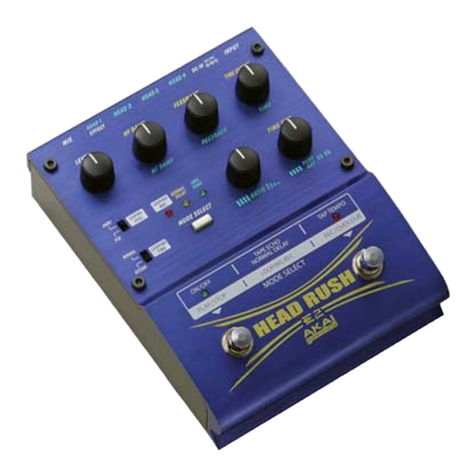
Akai
Akai head rush e2 Operator's manual
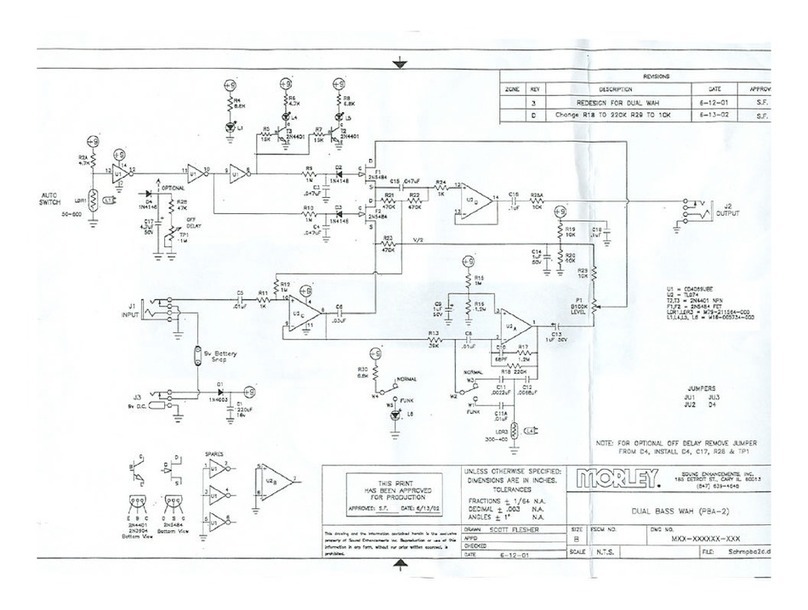
MORLEY PEDALS
MORLEY PEDALS PBA-2ES Wiring diagram
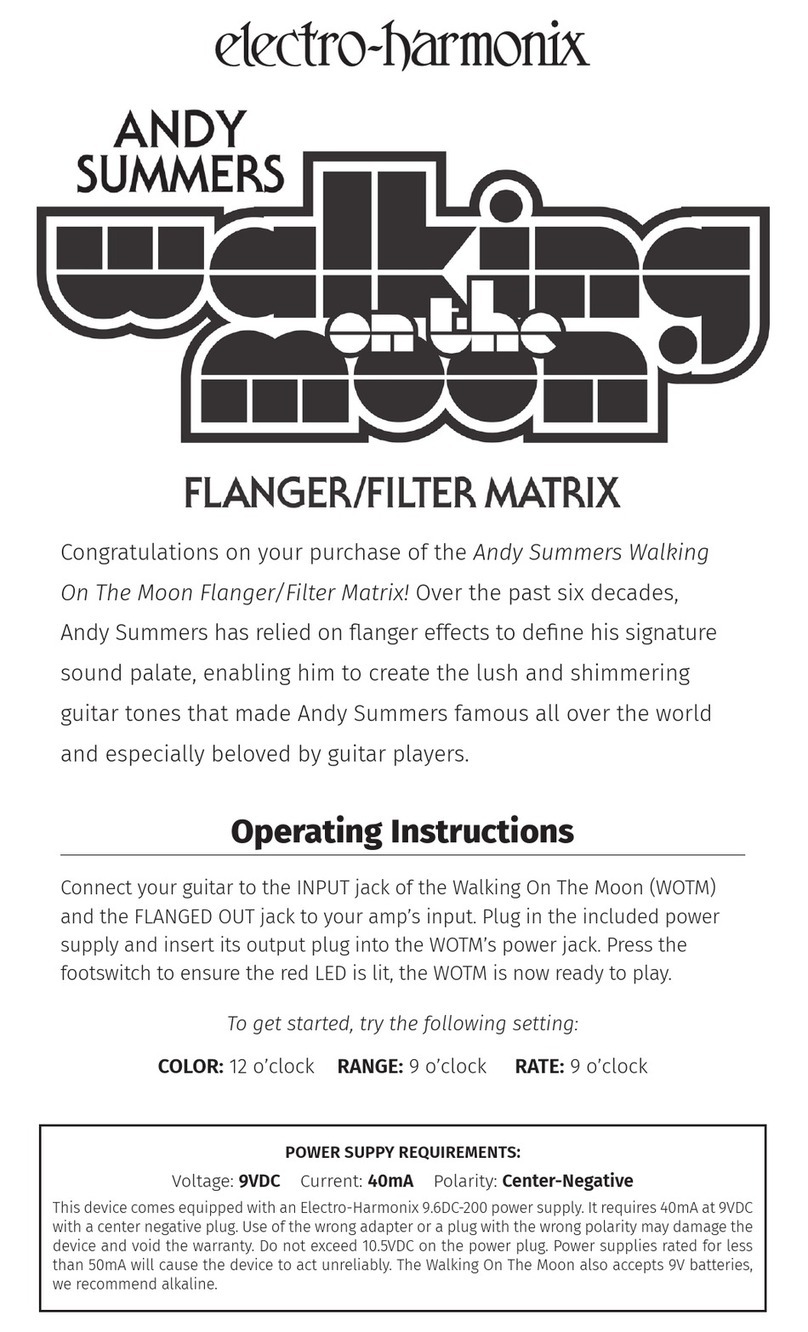
Electro-Harmonix
Electro-Harmonix Andy Summers Walking On The Moon operating instructions
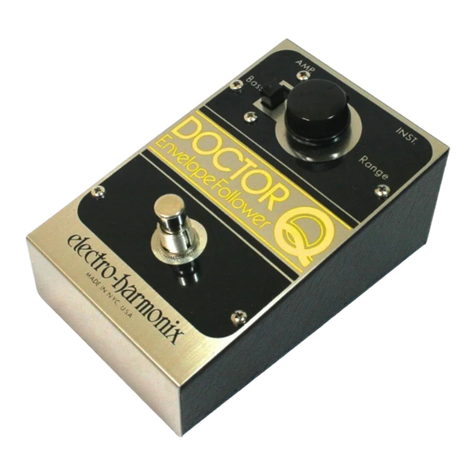
Electro-Harmonix
Electro-Harmonix DOCTOR Q quick start guide

Roland
Roland FC-300 owner's manual
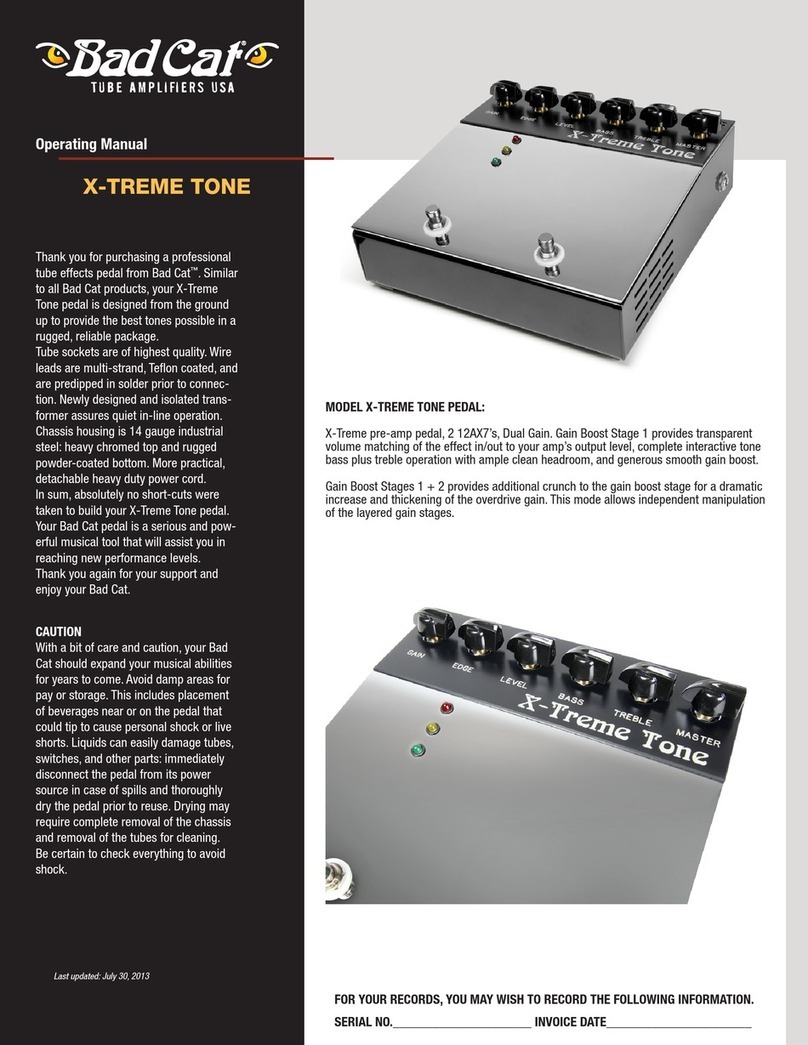
Bad Cat
Bad Cat X-TREME TONE operating manual

